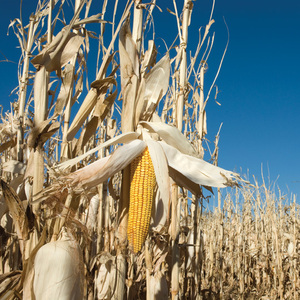July WASDE maintains 2020-'21 forecast for corn use in ethanol

July 10, 2020
BY Erin Krueger
The USDA reduced its estimate for corn use in ethanol during the 2019-’20 marketing year by 50 million bushels in its latest World Agricultural Supply and Demand Estimates report, released July 10. The forecast for corn use in ethanol during the 2020-’21 crop year, however, was maintained.
In the report, the USDA said this month’s 2020-’21 U.S. corn outlook is for sharply lower supplies, reduced feed and residual use, increased food, seed and industrial use, and lower ending stocks.
Corn beginning stocks are raised 145 million bushels, based on lower use forecasts for 2019-’20. Feed and residual use for 2019-’20 is lower based on indicated disappearance during the first three quarter of the marketing year. Food seed and industrial use is lowered 45 million bushels.
Advertisement
Corn use in ethanol for 2019-’20 is lowered 50 million bushels based on reported use to date and weekly ethanol production data reported by the U.S. Energy Information Administration in June and early July. The USDA currently predicts 4.85 billion bushels of corn will go to ethanol production in 2019-’20, down from 5.378 billion bushels in 2018-’19.
For 2020-’21, corn production is forecast 995 million bushels lower based on reduced planted and harvested areas from the USDA’s June 30 acreage report. The national average corn yield is unchanged at 178.5 bushels per acre.
Projected feed and residual use is lowered 200 million bushels, reflecting a smaller crop and higher expected prices. Food, seed, and industrial use is raised 25 million bushels. The forecast for 2020-’21 corn use in ethanol is maintained at 5.2 billion bushels.
Advertisement
With supply declining more than use, stocks are lowered 675 million bushels to 2.6 billion bushels. The season-average corn priced received by producers is raised 15 cents to $3.35 per bushel.
Foreign corn production is virtually unchanged from last month, as forecast increases for Russia and Bolivia are essentially offset by a reduction for Canada. Major global trade changes for 2020-’21 include larger corn imports for Canada and Algeria, with a partly offsetting reduction for Kenya. For 2019-’20, corn exports are raised for Argentina but lowered for Brazil for the local marketing year beginning March 2020 based on observed data through early July. China’s corn feed and residual use for 2019’20 and 2020-’21 is raised based on faster-than expected rebound in soybean meal equivalent protein consumption and current corn prices. Foreign corn ending stocks for 2020-’21 are lowered from last month, with the largest declines for China, Argentina, the European Union, Canada and Mexico.
Related Stories
U.S. fuel ethanol capacity fell slightly in April, while biodiesel and renewable diesel capacity held steady, according to data released by the U.S. EIA on June 30. Feedstock consumption was down when compared to the previous month.
XCF Global Inc. on July 8 provided a production update on its flagship New Rise Reno facility, underscoring that the plant has successfully produced SAF, renewable diesel, and renewable naphtha during its initial ramp-up.
The U.S. EPA on July 8 hosted virtual public hearing to gather input on the agency’s recently released proposed rule to set 2026 and 2027 RFS RVOs. Members of the biofuel industry were among those to offer testimony during the event.
The USDA’s Risk Management Agency is implementing multiple changes to the Camelina pilot insurance program for the 2026 and succeeding crop years. The changes will expand coverage options and provide greater flexibility for producers.
EcoCeres Inc. has signed a multi-year agreement to supply British Airways with sustainable aviation fuel (SAF). The fuel will be produced from 100% waste-based biomass feedstock, such as used cooking oil (UCO).
Upcoming Events










